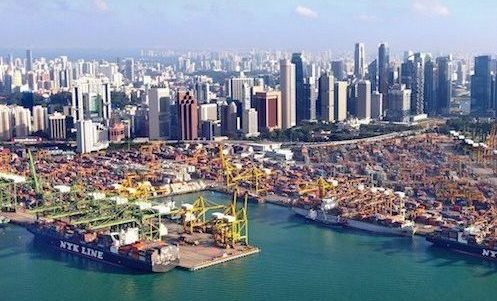Getting Singapore’s Gen Y and Gen Z interested in shipping

The maritime sector in the island republic has a worryingly greying population of talent.
Human resources issues tend to take up much discussion at any shipowner roundtable that we organise. How to get millenials to appreciate a career in shipping is as attractive as the likes of, say, corporate finance or tech remains a massive stumbling block, but one that the authorities and the private sector continue to address.
If you look at a city’s shipping vibrancy via the amount of HR moves going on there is only one contender for top hub status: Singapore. That’s the view of Heidi Heseltine, managing director of Halcyon Recruitment.
“Singapore continues to offer diverse maritime related employment opportunities in abundance, both for commercial roles and technical roles,” she says. “It is also seen to be one of the most attractive locations globally from a work/life balance perspective.”
The Maritime HR Association, coordinated by Spinnaker Global, published its tenth annual salary survey earlier this year. The survey includes data from 96 member companies, reporting data for more than 26,000 maritime professionals in 119 countries. One of the key findings from the poll was how Singapore salaries rank, particularly in light of it being one of the world’s most expensive places to live.
For instance in 2016, six of top ten highest paid chartering roles around the globe were located in Singapore. While median salaries across this group of staff remain fairly stable compared to last year, the pay ranges have broadened quite significantly. This can be attributed to both a fairly consistent decrease at the lower ends of the scale, coupled with some quite considerable increases at the top.
Unsurprisingly possibly, the reductions are most prominent at the junior and professional level – where local recruitment is now encouraged via the government’s employment pass arrangement. Senior professionals (i.e. team leaders) in this field of work seem to have been rewarded most generously with a top end average increase of over 20% compared to 2015.
In contrast, the salary ranges for those working within operations have narrowed (although there does remain some consistent overlap between levels, as you might expect). Year on year analysis shows a continued drop in salaries, most obviously at junior levels. Clearly, this does not mean that individuals have been forced to take pay cuts. Instead, there seems to be more recruitment of local staff at junior levels, who are much less likely to receive inflated ‘local-plus’ salaries. It’s quite a different picture at the more senior level though; with starting salaries generally higher than in 2015 (up to nearly 30% more) – and director level positions seeing an increase of over 20% at the median.
In shipmanagement, there is mixed impact on technical and marine, safety and quality staff – with some patterns again visible by job level, but also by specialism. Unsurprisingly there is either little change or a reduction seen at the lower end of the pay scales when compared to last year. The upper levels are generally increasing too – especially for technical trainees. This is compared to marine staff who actually see some reductions at the top end – not across the board, but scattered at both the senior management and professional levels.
Clarence Khoh, founder of Singapore-based recruitment firm Talent-Merge, discusses with Splash key HR issues for maritime Singapore.
“The maritime sector has a greying population of talent. New blood is needed to reenergise and continue the success in the next wave,” he says.
Khoh sees more mergers and acquisitions in 2016, which means that there will be qualified senior executives looking for a new challenge.
Khoh, having worked for tech firms in the past, has some very valuable ideas of how to get the youth of today interested in a career in shipping.
“If we want to attract the Gen Y and Gen Z to join the maritime sector, more needs to be done by using technology,” Khoh says. “It will be ideal if we can have students going onboard the vessel for one week and experiencing what it is like to be onboard a vessel , and letting them know that they can still access to social media, such as Facebook and stay connected with their friends. This may further gain their interest and attract them to join the maritime sector.”
This is a feature that first appeared in our fourth annual Singapore Market Report – a 28-page magazine that launched last week. Readers of Splash can access the full magazine for free online by clicking here.
